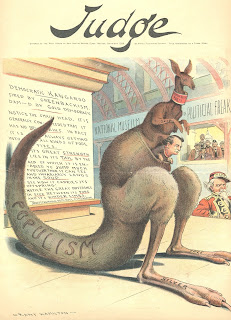by Susan Zehnder, Education Director
Spring seems to be arriving at last. Things are looking greener,
and there’s new interest in tidiness sparked by recent books and television
programs on organizing. I’ve been wondering about cleaning tools, take brooms
for instance.
 |
| Ladies with push broom, April 1903 |
The word broom comes from the Anglo-Saxon for thorny shrub,
and early brooms were just that, hand-made from twigs gathered together and
tied to a stick.
 |
| Early broom examples |
As a cleaning tool, similar brooms have shown up around the
world. In parts of Asia, Han Chinese recognize Tomb Sweeping Day in early April.
This 2,500-year-old holiday involves ritual cleaning as a sign of ancestral respect.
Another sweeping tradition comes from Africa, where various cultures continue
to sweep fenced-in areas in front of their homes as a proud sign of ownership. Having
a well-swept yard invites good will and neighbors to visit. Bringing this
tradition with them to the United States, enslaved Africans continued the
practice. It’s a tradition that fit easily into the warmer southern parts of our
country. Sweeping created an inviting outdoor space for people who had very
little to call their own. A swept yard also eliminated worry of weeds and eliminated the
impracticality of caring for a lawn. Patterns left in the dirt by sweeping, besides
looking nice, were a helpful way to see if any snakes or undesirable elements had
disturbed the area.
Inside houses, smaller versions of brooms were regularly used
to sweep ash, embers and debris near fireplaces. Benjamin Franklin brought sorghum to the new colonies in 1757 intending
to use it to make better brooms. Sorghum corn is now called broom corn and while technically edible, it’s
really a grass not a variety of corn.
 |
| Sorghum also known as broom corn |
Forty years later, a Massachusetts farmer named Levi Dickinson
made changes which improved the quality of brooms. Wanting a gift for his wife,
he bundled just the tops of sorghum tassels and attached them to a long-handled
stick. With her new broom, Mrs. Dickinson could sweep
cleaner. Word of her cleaning tool’s success spread and created demand for bundled
sorghum brooms. Understandably, these finer brooms didn’t last, falling apart
easily. Dickinson addressed this by inventing the foot-treadle broom machine, a device letting him make brooms faster. In less than ten
years, Dickinson and his son were selling hundreds of similar brooms around the
country.
This broom from our collection would be a similar to Dickinson's broom. The brush strands have been gathered into a bundle and tied
to a stick.
 |
| Broom from our collection, n.d. |
One of the last big changes in broom design occurred before
the turn of the 19th century. The Shakers, a religious sect known
for their beautiful craftsmanship and practical design of everyday items, started adding wire to secure the bristles creating a sturdier broom. They also invented
a broom vise to flatten the brush. Up to
this point, all brooms had been round. Using these flat brooms look familiar to us today. Sweeping with this kind of broom, a user was able to sweep
those pesky hard to reach places. This kind of broom was also easier to store because it took up less
space.
By the 1830s there were over three hundred U.S. broom manufacturers producing
close to 60,000 brooms a year. Less than twenty years later over a thousand broom
manufacturing businesses were thriving and located throughout the Eastern
United States. By the beginning of the twentieth century, motorized vacuums
began to be popular. The broom boom subsided, and by the 1960s most of the country’s
broom manufacturers closed. Now most brooms are imported and made from
synthetic materials. There is a new interest in heritage craft broom making and
these brooms cost more. Brooms are something everyone seems to have at least
one of, somewhere.
 |
| Clean up after 1972 Flood |
This last picture from our collection, shows how handy brooms can be. Time to find mine.















